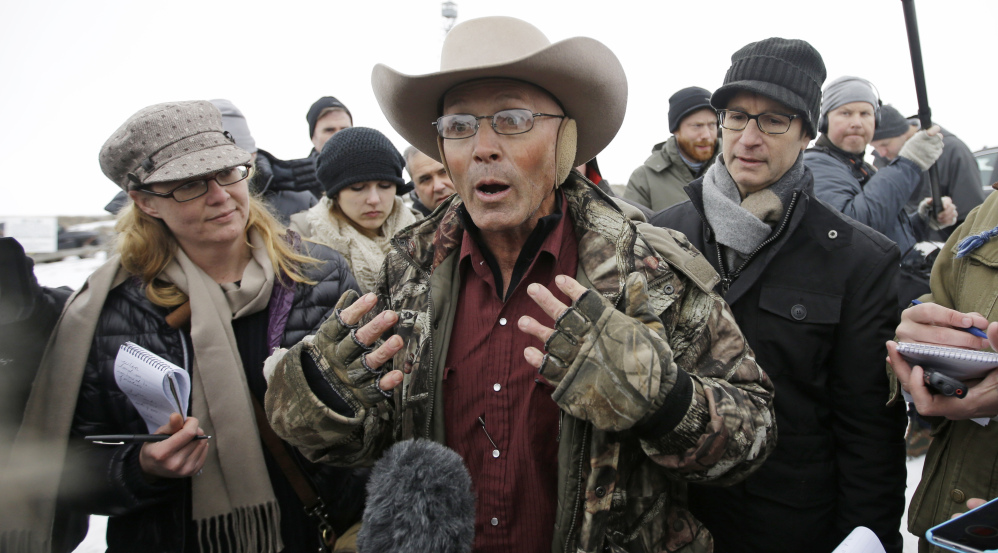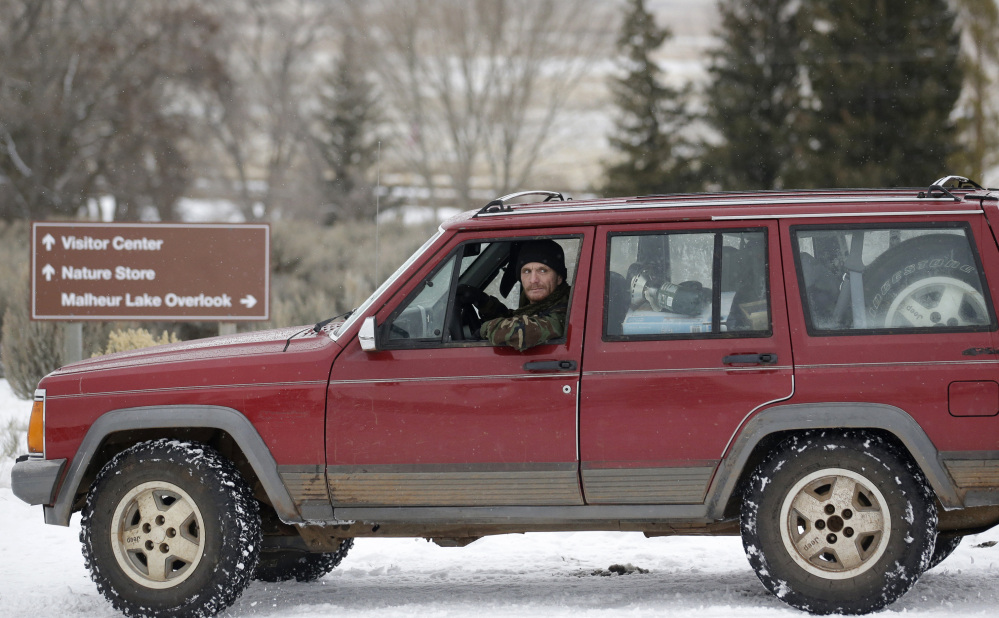BURNS, Ore. — A leader of the small, armed group that is occupying a remote national wildlife preserve in Oregon said Tuesday that they will go home when there is a plan to turn over management of federal lands to locals.
Ammon Bundy told reporters at the Malheur National Wildlife Refuge that ranchers, loggers and farmers should have control of federal land – a common refrain in a decades-long fight over public lands in the West.
“It is our goal to get the logger back to logging, the rancher back to ranching,” said the son of Nevada rancher Cliven Bundy, who was involved in a high-profile 2014 standoff with the government over grazing rights.
The younger Bundy’s anti-government group is critical of federal land stewardship, but environmentalists and others say U.S. officials should keep control for the broadest possible benefit to business, recreation and the environment.
The armed activists seized the refuge’s headquarters Saturday night. Roughly 20 people bundled in camouflage, earmuffs and cowboy hats appear to be centered around a complex of buildings on the 300-square-mile high desert preserve.
As the takeover entered its third day, authorities had not moved in and had not shut off power to the refuge, Arizona rancher LaVoy Finicum said, adding that he was eager to go home and tend to his cattle.
“If they cut it off, that would be such a crying shame. All the pipes would freeze,” he said.
A pickup truck blocked the entrance to the preserve earlier Tuesday, and a man looked out over the snowy grounds from a watchtower.
Ammon Bundy offered few specifics about the group’s plan to get the land turned over to local control, but Finicum said the activists would examine the underlying land ownership transactions to begin to “unwind it.”
The federal government controls about half of all land in the West, which would make the wholesale transfer of ownership extremely difficult and expensive.
For example, it owns 53 percent of Oregon, 85 percent of Nevada and 66 percent of Utah, according to the Congressional Research Service. Taking over federal public lands in Idaho could cost the state $111 million a year, according to a University of Idaho study.
Randy Eardley, a Bureau of Land Management spokesman, said the group’s call for land ownership transfer doesn’t make sense.
“It is frustrating when I hear the demand that we return the land to the people, because it is in the people’s hand – the people own it,” Eardley said. “Everybody in the United States owns that land. … We manage it the best we can for its owners, the people, and whether it’s for recreating, for grazing, for energy and mineral development.”
Bundy said the group feels it has the support of the local community. But the county sheriff has told the activists to go home, and many locals don’t want the group around, fearing they may bring trouble. A community meeting was scheduled for Wednesday.
So far, law enforcement has not taken action against the activists, whose rallying cry is the imprisonment of father-and-son ranchers who set fire to federal land.
“These guys are out in the middle of nowhere, and they haven’t threatened anybody that I know of,” said Jim Glennon, a longtime police commander who now owns the Illinois-based law enforcement training organization Calibre Press. “There’s no hurry.”
Some observers have complained, suggesting the government’s response would have been swifter and more severe had the occupants been Muslim or other minorities.
The group calling itself Citizens for Constitutional Freedom said it wants an inquiry into whether the government is forcing ranchers off their land after Dwight Hammond and his son, Steven, reported back to prison Monday.
The Hammonds, who have distanced themselves from the group, were convicted of arson three years ago and served no more than a year. A judge later ruled the terms fell short of minimum sentences that require them to serve about four more years.
The takeover comes amid a dispute that dates back decades in the West.
In the 1970s, Nevada and other states pushed for local control in what was known as the Sagebrush Rebellion. Supporters wanted more land for cattle grazing, mining and timber harvesting.
Send questions/comments to the editors.




Success. Please wait for the page to reload. If the page does not reload within 5 seconds, please refresh the page.
Enter your email and password to access comments.
Hi, to comment on stories you must . This profile is in addition to your subscription and website login.
Already have a commenting profile? .
Invalid username/password.
Please check your email to confirm and complete your registration.
Only subscribers are eligible to post comments. Please subscribe or login first for digital access. Here’s why.
Use the form below to reset your password. When you've submitted your account email, we will send an email with a reset code.